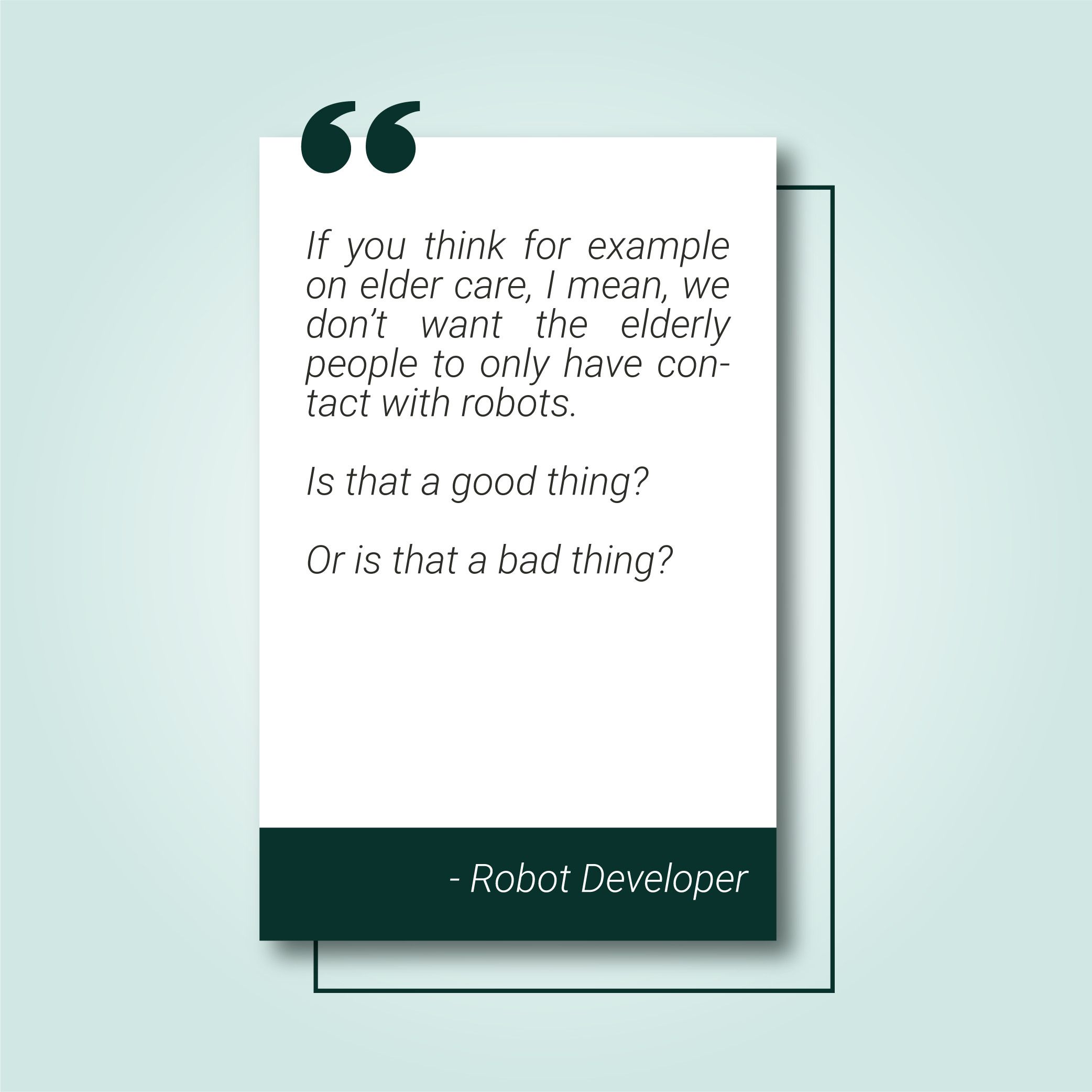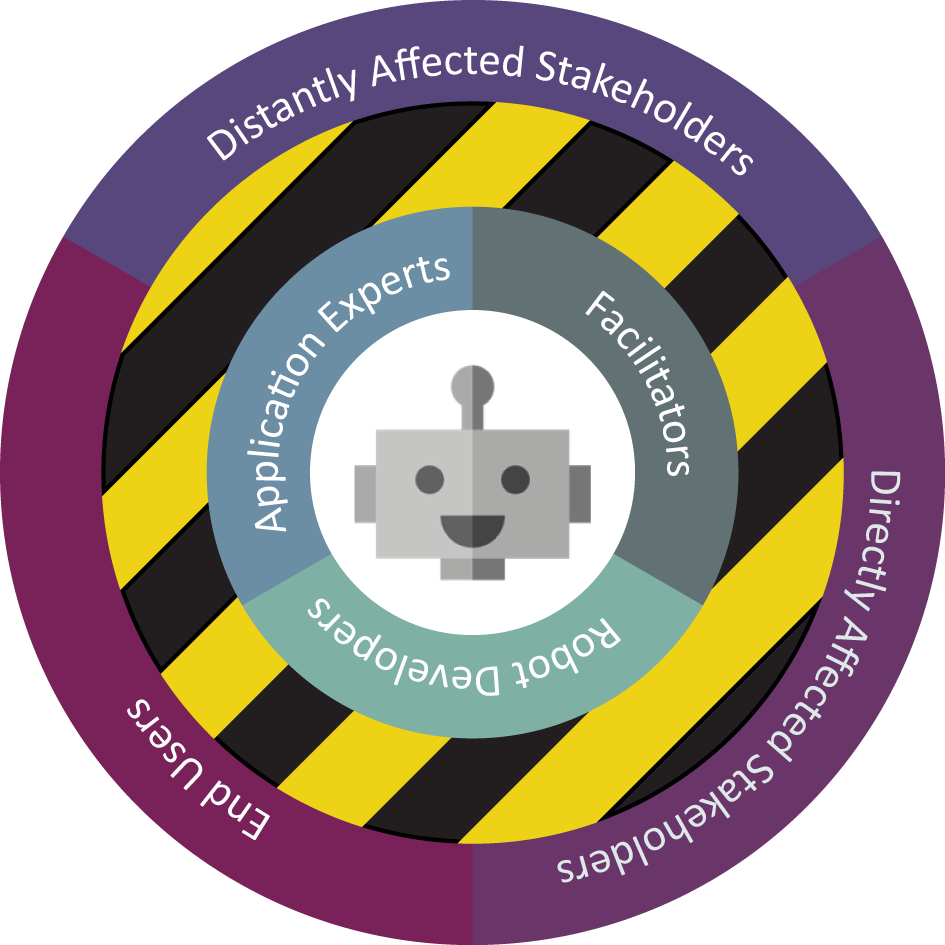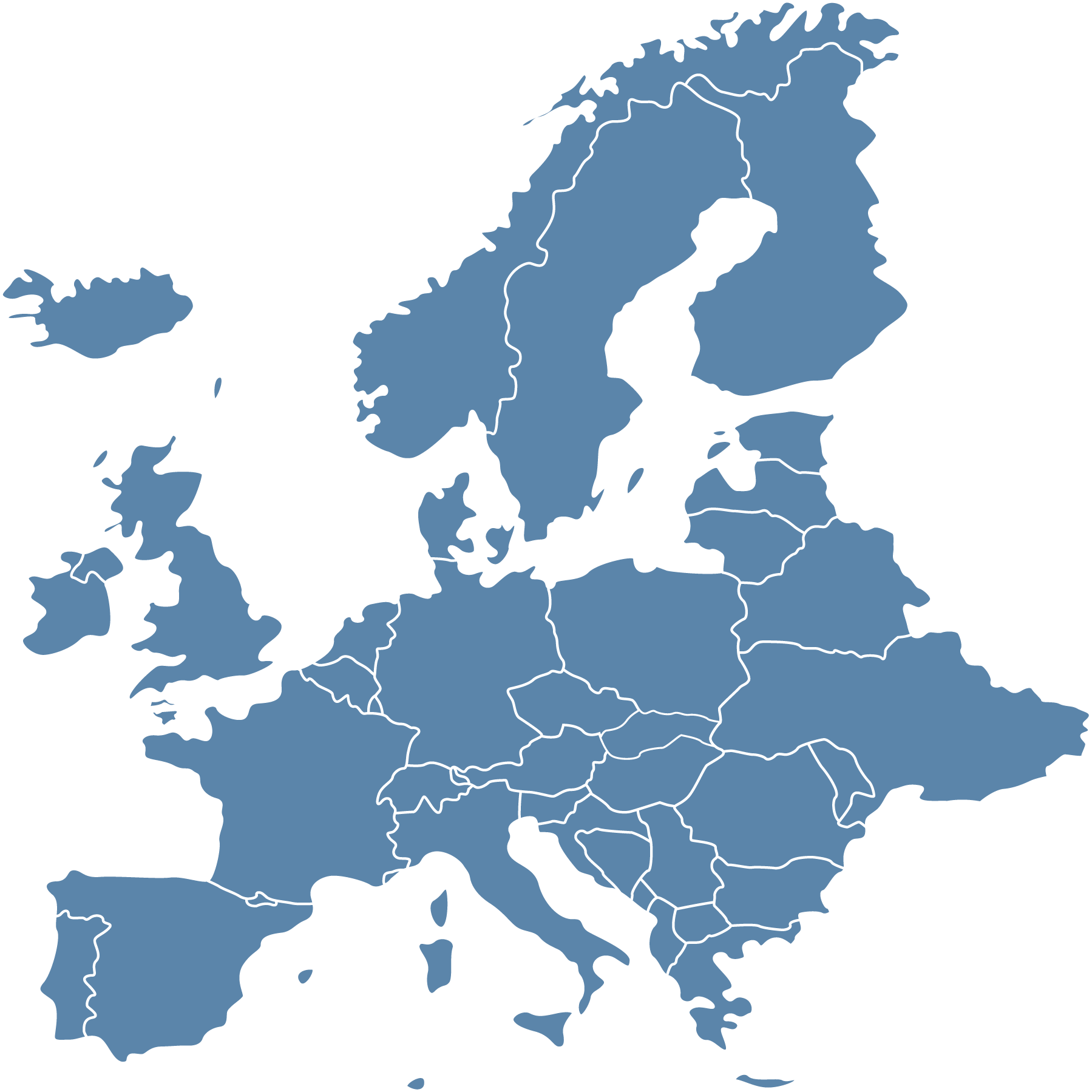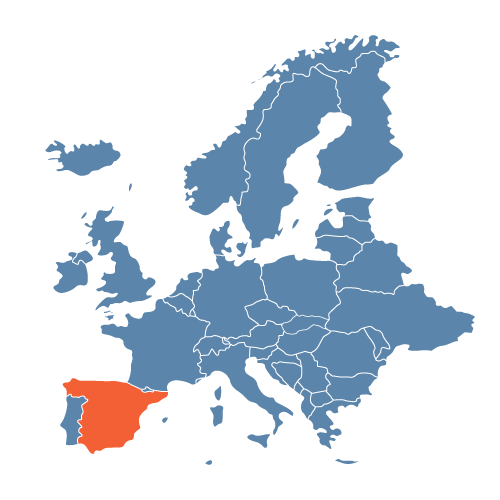Ethics Beyond Safety
What does ethics means within research and development?
Ethics in R&D means being aware that there is always a trade-off.
What do robot makers mean by ethics?
Engineers are often practical people working on solutions to specific problems who tend to connect ethics with one main area in their everyday work lives: safety.
Here we go deeper in the concept of ethics to understand why it may be difficult for technical people to incorporate ethical considerations into their daily practices.


Human Proximity Model
In robots design and development, ethics is primarily considered as a matter of safety. We have found that the main problem with ethics in robot design is be the gap between robot makers and affected stakeholders.
Robot Makers' Views on Ethics
Expand the tabs below to learn more about Problem Solving and Holistic views on ethics.
Problem-solving views on ethics
Robot makers primarily consider ethics a matter of safety. Safety is an inherently technical and system-oriented concept often connected to regulations, rules, and standards. Here, being ethical is to focus, from a technical point of view, on what can go wrong in a robot project with respect to the materiality of the robot and the presence of humans.
Some robot makers view ethics as a problematic term associated with limitations and negative occurrences related to robots and robot recipients. When applied to robotics and real-life scenarios, ethics often appears to be more of a problem and a matter of wrongdoing rather than of what is actually a right thing to do.
Many robot developers expect and rely on the recommendations given by an ethics committee and relevant legislative measures.
Holistic views on ethics
This area covers conceptions of humans in Human-Robot Interaction (HRI) relations. Some robot makers are completely aware that a wider ethics cannot be separated out from technology.
Some robot makers do take an active stance against delivering robots for military uses, for example. Other robot developers, and robot makers, with a holistic view on ethics see affected stakeholders as a rich source of ideas for better design, and they express curiosity about what matters in the lives of humans.
Giving Voice
Click on to listen to the Affected Stakeholder. Click on the arrows to navigate. You can expand the content to full screen by clicking on the bottom right corner.
Beyond Robot Makers' Views on Ethics
Technology is distributed, while ethical concerns are insulated
Distributed Technology
Design and development of robots is distributed across time and space all over the globe. A robot is often developed simultaneously in many different places. Ethics should be likewise distributed.

Insulated Ethics
The people knowledgeable about ethical issues are often experts who actually are interested. Robot developers and affected stakeholders are not engaged in these debates.

- Ethics in Robot Design: Personal and collective awareness of ethical issues as well as the ability to activelly engage with both ethical reflection and practices with the goal to pursue value-sensitive design and responsible research and development in robotics. The key premise is the orientation towards others, which includes the practice of talking other people's perspectives and understanding their motives.
- Human Safety: Bodily and mental integrity of people
- Distributed Ethics: Making robots is distributed, which means that ethical responsibility should be distributed
- Roboethics: Applied ethics whose objective is to develop scientific/cultural/technical tools that can be shared by different social groups and beliefs. These tools aim to promote and encourage the development of robotics for the advancement of human society and individuals, and to help preventing its misuse against humankind.
- Relational Responsibility: Tied to collaborative learning. Robot makers have to acknowledge a responsibility from the relational character of ethics in technology.
Key Concepts
Reflection Points
- Would your approach towards ethical responsibility be different if considered as a matter of your individual responsibility?
- Is safety the most important ethical concern in your work? Why?
- Would it be useful for you to know more about ethical approaches and practices undertaken by other robot makers?
- If you could freely contribute to development of responsible robotics and ethical robot design, what would you do in practice?
Concluding Remarks on Ethics Beyond Safety
REELER data indicates that there is a need for the overall shift from safety-oriented ethics in robotics towards a more holistically oriented distributed ethics. A key premise is that ethical concerns arise together with and not in addition to engineering work and they evolve as robotics evolves.
In practice, what matters is not only how we define and study ethics in robotics, but also how we incorporate ethics into actual design thinking and practices.
The key emphasis here is on the understanding of ethics as a form of personal and collective engagement. The collective responsibility points to human persons standing on both ends of the robot design process rather than on robotic systems or safety concerns or abstract considerations detached from the actual robot design and development process.
If you found this interesting, read more here:
Click here to Download Chapter 4: Ethics Beyond Safety
Download
If you enjoyed reading about Ethics Beyond Safety, you may also like:
By going over each icon with the mouse you will get a brief description of the corresponding topic.